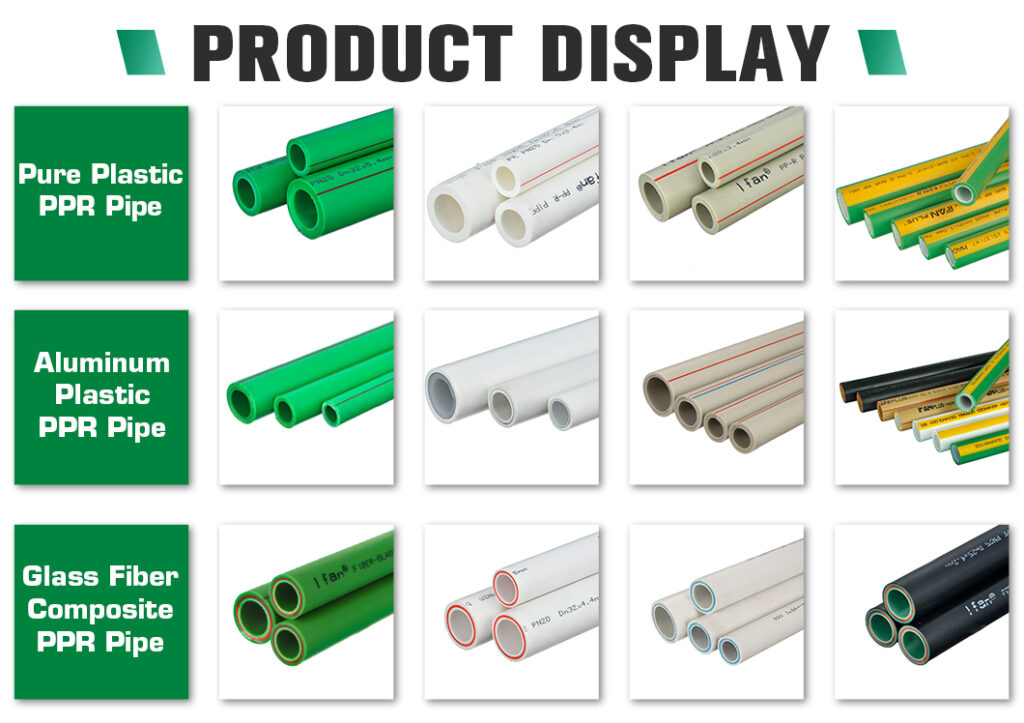The Versatile Applications of PPR Piping in Various Industries,PPR, short for Polypropylene Random Copolymer, is a popular thermoplastic material widely used in piping systems across various industries. In this article, we will delve into the fundamental aspects of PPR piping, its numerous advantages, and explore how it is applied in different sectors.IFAN factory 30+ years manufacture experience support color/size customization support free sample.Welcome to consult for catalog and free samples.This is our FacebookWebsite: www.facebook.com.
Understanding PPR Piping
PPR or Polypropylene Random Copolymer is a type of plastic often used in the manufacturing of pipes and fittings. It is known for its excellent balance of physical, chemical, and thermal properties, making it a preferred choice for a wide range of applications.
Applications in Different Industries
PPR piping is a versatile solution, finding applications in several sectors:
1. Construction Industry
In the construction industry, PPR piping is primarily used for water supply systems and indoor heating. Its durability, non-corrosive properties, and hygienic attributes make it ideal for delivering clean and safe water to homes and buildings.
2. Industrial Sector
The industrial sector makes extensive use of PPR piping for conveying various fluids, including aggressive chemicals. Its resistance to corrosion, even in challenging industrial environments, is a key advantage.

3. Agriculture and Greenhouses
PPR pipes are utilized in agriculture, especially in greenhouse irrigation systems. Their robustness ensures they can handle the constant flow of water required in these applications.
4. Swimming Pools and Spa Facilities
Swimming pools and spa facilities require durable and corrosion-resistant piping systems to maintain water circulation and hygiene. PPR pipes are well-suited for these demanding environments.
5. Commercial Buildings
Office complexes, shopping centers, hotels, and other commercial structures employ PPR piping extensively for water supply and heating systems. Their longevity and low maintenance requirements are particularly beneficial.
Advantages of PPR Piping
PPR piping comes with several advantages that set it apart from other materials:
1. Corrosion Resistance: PPR pipes are highly resistant to corrosion and rust, even when exposed to aggressive chemicals.
2. High Temperature Tolerance: They can maintain their structural integrity at different temperature extremes, making them suitable for both hot and cold water systems.
3. Durability: PPR pipes have a long service life, reducing the need for frequent replacements and maintenance.
4. Low Friction Loss: Their smooth inner surface minimizes friction loss, ensuring efficient fluid flow.
5. Hygienic: The material does not support bacterial growth and keeps the transported fluids uncontaminated.
Considerations When Using PPR Piping
When implementing PPR piping systems, there are several factors to consider:
1. Sizing: Choosing the right pipe diameter to meet flow rate requirements is crucial.
2. Pressure and Temperature: Ensure that the chosen PPR piping can withstand the pressure and temperature conditions specific to your application.
3. Maintenance: Regular maintenance is essential to preserve the efficiency and longevity of the piping system.
4. Compatibility: Verify that PPR is compatible with other materials used in the system to prevent adverse reactions or failures.
In conclusion, PPR piping, with its exceptional properties and adaptability, plays a vital role in different industries. Its durability, non-corrosive nature, and ease of maintenance contribute to its popularity as a reliable choice for piping systems in a variety of applications. Whether in a residential setting or an industrial facility, PPR piping delivers safe and efficient fluid transport solutions.

